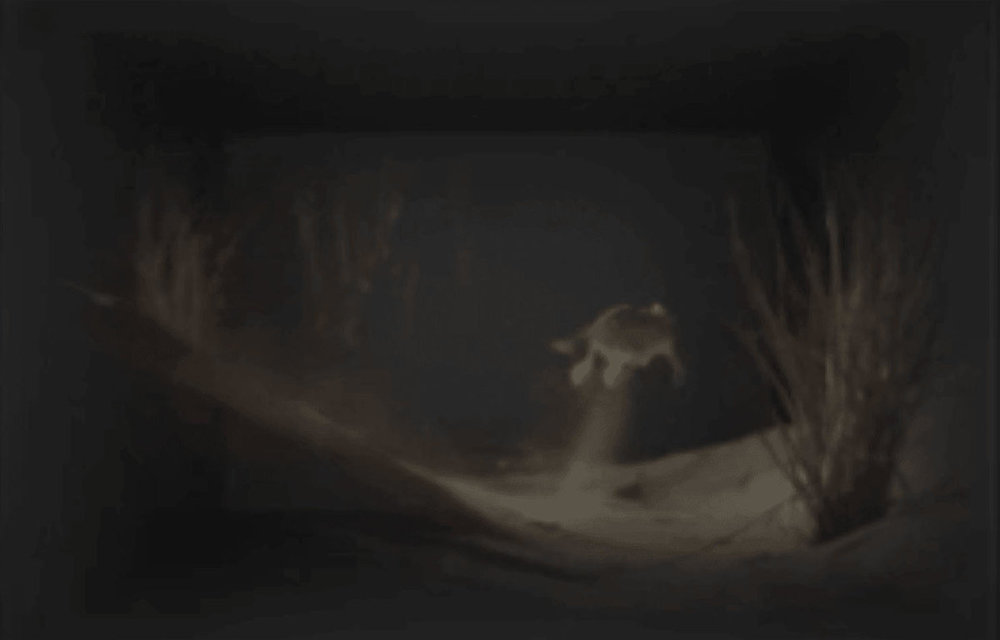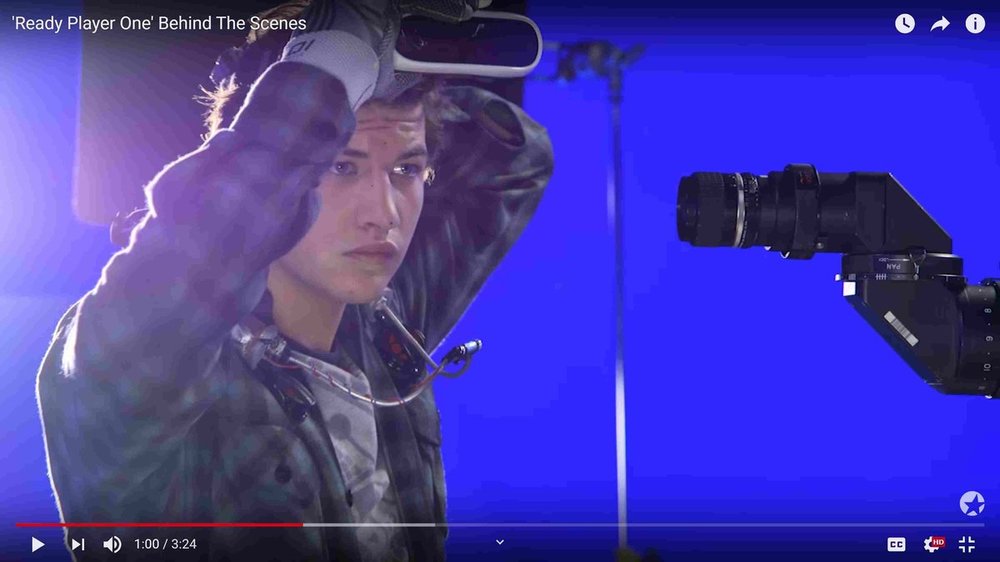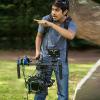Search the Community
Showing results for tags 'how to'.
-
Hi everyone I've been rebuilding an early 50's vintage H16 which was completely frozen, and so far I've dissembled the camera, cleaned it, obtained new parts where needed, and have actually reassembled the workings. It runs! And yes, I have a repair manual which has been essential to this project. I realize there's much more to it like alignment and adjustment, but until the camera is film tested can it be determined if the rebuild was a success. And I do intend to use it once this is done. This camera will compliment my vintage H8 and REX1. The REX was professionally serviced. Anyway, thank you for staying with me, now if anyone has tips, advice, sources, parts, etc, please, anything would be appreciated. Right now, I'm looking for light seal materials. My supplier informed me sealing material for older cameras is no longer available, but didn't elaborate on substitute materials or methods. If anyone has information, how to, or advice, please and thank you! Also, are there special lubricants for the Bolex? If so, what type? Are they easily available? And what substitutes an be used? Well, thank you folks, I intend to get this camera running, and I have discovered that taking it apart was a challenge but was easier than I thought; and putting back together isn't that hard. The challenge is the adjust, sync and alignment. I sincerely thank each and everyone one of you who respond with anything, including stories and anecdotes about using these great cameras Cheers Gil in Washington DC USA
- 1 reply
-
- parts
- maintenance
-
(and 2 more)
Tagged with:
-
As always thank to anyone in advance who reads this and your generosity with sharing your opinions and experience. I am in the process of prepping for a particular shoot, one of which that I do not have any experience in the type of shooting, although I'm eager to learn. Basically, the job requires me to 1 shot of a small rodent being shipped in from abroad on a closed set in a studio. We are to film it inside a box with 30cm width and 100cm length; interior walls fully blacked out, and the box is filled with sand and a few elements of grass. In this box it will be able to move around freely and jump (the rodent can jump 12cm on each leap). I need to have a hole in the box for the lens. They need this to be captured in as high a frame rate as possible, however we are still concerned with subjecting the rodent to too much light which could potentially harm it. After speaking with the animal handler, he has told me the light the rodents are used to would be just a bit brighter than sunset, which is not great. This means 240 FPS is more than likely not an option but I would prefer not to go below 120 FPS (96 FPS is the minimum for sure). The shutter speed will have to be higher than the average for this also as the rodent I suspect moves and jumps quite fast. To add to this I will need a high F stop to capture the rodent in sharp focus to limit any soft shots (I am trying to get a focus puller on this job if budget will allow). So putting all these factors together it does seem I'm going to need to light this quite brightly , and if the animal care provider does not agree on the lux levels of the light I will have to sacrifice the F-Stop sharpness a but along with reducing the high frame rate. Now a few questions for anyone who may have some experience with filming animals in a studio in tight areas or in small mammal camera boxes: What lens/lenses would you suggest for capturing this creature? The client has requested they only need 1 shot, but I'm thinking if budget allows having a wider lens to capture the interior of the box and the rodent in a full shot, and then secondly a macro lens to hopefully capture an extreme close up as it jumps in mid air - poking the lens through the same hole just changing the lens (I'm thinking perhaps 2x Arri Master Primes as they are the sharpest lenses I have worked with before - suggestions are welcome on brand and especially suggestions on focal length? Its difficult to know this just going off a the 30cm width and 100cm length; I will only have access to the box the day before so will try to arrange a test even if its on my small Black Magic camera. Also any tips on if I should be thinking of using extenders or macroscopic lens adaptors for macro shots, or if I should indeed be looking mainly at macro lenses for this What cameras are recommendable? I personally am looking at the Red Helium as it has the option to record 2K in 240 FPS max and various other below frame rates, or the Arri Alexa Mini at 200FPS in 2K Pro Res. I originally actually thought of the Red Gemini as my research shows it performs best in low light situations, however this camera is not an option from my preferred rental house. Lighting: How can I light the rodent in the box? In my head there is 3 options - 1. Top of box is a netted material which will keep the rodent in and allow my light to shine through above it (any suggestions on material welcome) - 2. small LED's stuck to the interior top of the box - 3. A hole again through the box with a light shining though (although this means my lighting shape and direction can not change so quite limiting. ------ My first thought is to use an Arri M8 or M18 as the main light with a 45 degree back angle; Also putting in a small piece of white cloth on the interior of the box to get some light bounce back to fill in the front. (I'm lighting to make it look like a real sunlit setting). The M18 I will spot 50%. From my calculations 120 FPS at ISO 1200 with a shutter angle of 90 degrees at 50% spot would allow me to bring the F-Stop to 11 at a distance of roughly 5 metres. Now 5 metres for an M18 to the rodent may actually be to intense for the animal so an M8 may be more sufficient. Going by Arri's photometrics the majority of their lights are recommended to be kept at a safe distance of at least 5 metres but I assume that is not intended to mean for rodent size. Would be interested to hear if anyone has a solution for this in terms of using a different light or managing to put the light through the hole but at distance without leaving a gap in the box. I have to make sure the rodent is not affected by the heat or burned so I have been thinking going LED if I could get enough light in there for my frame rate. Any need for a Focus Puller? Normally I would of course want this crew member on board, but the budget is so tight right now and the nature of the shoot makes me wonder if their services would be void when regarding the speed and uncertainty if the animal. F11 should keep this sharp in my opinion, but again not doing this shoot kind of shoot would appreciate your opinions. I have attached 2 reference pictures of for the shoot. It is screenshots of the same type of shoot filming a gerbil in a confined space. Notice the hot slash of light across the sand, that is pretty much what I am going for. I am also trying to get the same focal length if anyone has suggestions on what this could be. I will have some pictures soon of what the box will look like so I will share that too. Any experience or suggestions is seriously welcomed so please let me know your thoughts or any questions you might have. Thanks so much.
-
Hi people, Would very much appreciate if anyone could shed some light on how this shot was achieved (in production and in post production). I can see its on a periscope camera lens for this shot, but is this just because they are shooting on a large film camera? Could this be achieved without the periscope if say using an alexa mini? If so what type of lens is ideal for this? And I assume the point of view digital tunnel is added in post with rotoscoping around the interior of the goggles first before coming in to full screen. If this is indeed the case can anyone tell me what they are raising in front of the actors face as the camera turns in the second picture? Thanks so much. Please find the clip from the movie (Timecode 00:25-00:32)... Also please find the link to the video showing the BTS (Timecode 00:42-00:45)...
- 1 reply
-
- 1
-

-
- macro lens
- how to
-
(and 2 more)
Tagged with:
-
Good evening ladies and gents, I just came back from my C&G BS:7671 18th Edition exam and realised that I'm still missing some information regarding the legal requirements to call oneself a lighting designer/gaffer/spark in the UK. I thought maybe it would be a good idea to open a thread about these details especially here where(UK) you cannot just decide overnight that you want to be a gaffer but actually need to get qualified. My questions are What are the minimum requirements to call yourself a Spark or taken seriously as one? (besides BS:7671, I heard that also NA7909(3) is recommended to get things started) Do you need to get certified as an electrician to even begin your journey towards becoming a gaffer? In your experience as a gaffer, which qualifications/courses you absolutely had to get to be part of larger productions? Can you be part of an union if you are not fully certified as an electrician? (e.g. BECTU) How far can you wing it as an unofficial gaffer? (uncertified) Which is the point where the law prevents you from working on set no matter your experience? Thank you for your time and hope other users will find this helpful ^__^ Best, TheDragon
- 10 replies
-
What's the best way to create this effect? Is it as simple as placing a cookie cutter with bars in front of light source? I've done that before but the edges were not as sharp as these photographs. Are they using something else? Maybe is this a source 4 with a gobo?
-
Quick Backstory: As someone who did not have the luxury to study film or even get experience on set even as a coffee-runner, due to an almost non-existent industry in my town (Durban, SA), I always wanted to learn how to film. I did have one resource however, decent internet. So I watched a Lynda.com tutorial, followed Tony Reale's HDSLR 101 series on youtube, constantly watched, commented and discussed topics on Vimeo Video School, as well FilmRiot/Indy Mogul/Cheesycam, and read a book or two. It has all lead to me this point since beginning my journey in 2012: I now want to use my skills gained from web-video directing, corporate video directing, and indie-film directing, to transition into commercial directing. I've moved up north to Johannesburg which is the "LA" of South Africa where I'm offered many opportunities. While I am working my ass off and getting on as many sets as I can and continuously working, I'd like to know if anybody can point me in the right direction to find any Directing tutorials online. Unfortunately, while watching hours of interviews with Tarantino, Nolan and so on are amazingly insightful, they are still far from the basics of what I'm looking for, so if anybody knows of the equivalent Lynda.com tutorial on directing, to be used as another source (i.e., not my only source) of learning, I would appreciate it! Thanks!
-
Hi there, I was recently watching MR ROBOT and there were two scenes which were caught my eye in the way that they were lit, however I have little ideas as to how they did it! I have uploaded screen shots here : https://www.facebook.com/bradley.shaw.104/media_set?set=a.10209473549450552.1073741857.1080325641&type=3 Please if any one could shine some light onto this it would be much appreciated! Thanks, Bradley
-
Hey everyone! Hoping I can get some help here from the community. Obviously, my dream career is to be a cinematographer, for television, advertising you name it. I started my own production company out in Orange County, California and we fortunately have had some pretty nice success and have been in business the past 2 years. However it is not necessarily the route I want to go for. I don't necessarily want to be a business owner or business man, I would much rather be out in the field shooting as much as possible. I tend to travel to LA a lot to work on projects there but as of now I find myself some what lost. I don't necessarily know whom to reach out to or what to reach out to. In a perfect world it would be awesome to get a job at a production company and be a shooter for them and earn a salary. I totally understand that in most instances I will have to start from the bottom and work my way back up and thats totally fine. Anyways can anyone point me in the right direction? Down below I'll leave my reel for you guys to check out. Thanks everyone.
- 20 replies
-
- production company
- industry
- (and 4 more)
-
This simple tutorial will teach you how to use markers to edit to a beat of a song in Adobe Premiere Pro and CC. Please like and subscribe for more tutorials. If you have any questions feel free to ask.
-
Hello! I've just started putting together a youtube channel with little behind the scenes videos, tutorials and advice for the aspiring, young, or otherwise "new" cinematographer. I've had many colleagues and students express frustration at the daunting task of "learning how to light". While complex in many regards, it also merely requires you to begin by putting one foot in front of the other... Take a look and let me know if you find this video helpful! Laura Beth Love, Cinematographer www.lblove.com
-
Hi, I recently bought some bulk super 8 film from Wittner and a reloadable super-8 cartridge. And when practicing loading with dead film, I'm struggling to get the super-8 to run smoothly through my camera, as Wittner cartridges does not come with the copper ring used to keep the film in place. I think they have replaced the copper ring with a clear plastic larger ring (seen in the photo, inside the cartridge on the right) that is suposed to keep the film (on the receiving side of the cartridge) in place some how? Here is a photo of everything supplied with the cartridge: Please could someone give me some advice on how to load these cartridges? I have seen some information on this forum about DIY reloadable cartridges but not the Wittner cartridges. I hope this makes sense, Thanks in advance. -Harry
-
Finally finished writing my article after several months of research and tests. I'm putting it out there, so if anybody in the future is interested they can learn everything they need from this article to get them going. Article Includes: - The film advantages and disadvantages. - Development times. - Procedures. - Workarounds. And much more information. Thanks https://republicphoto.squarespace.com/s/ECN-DEV4.pdf











